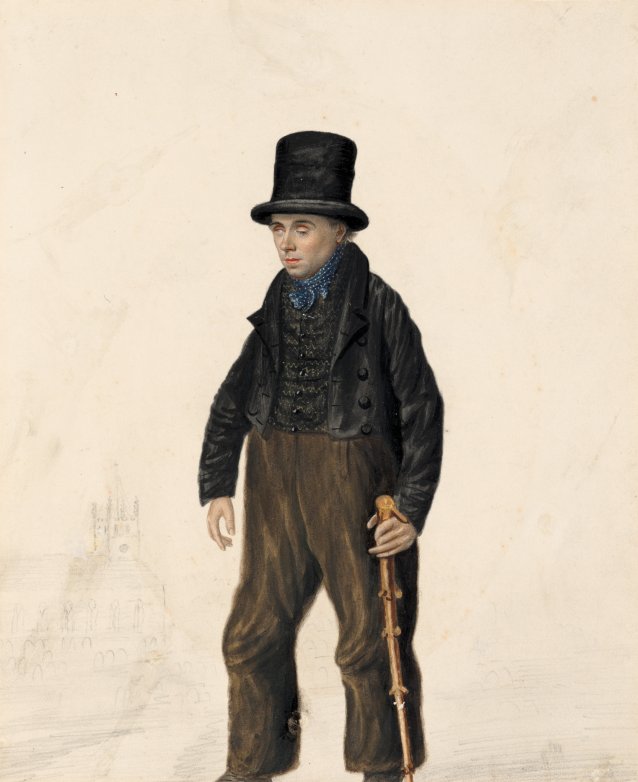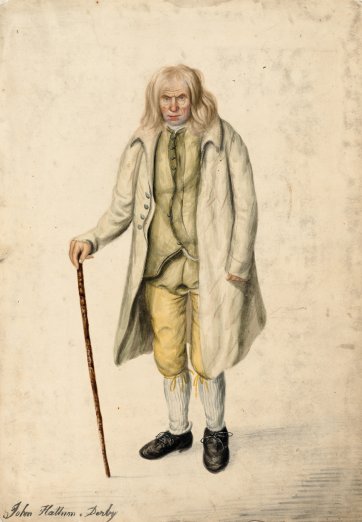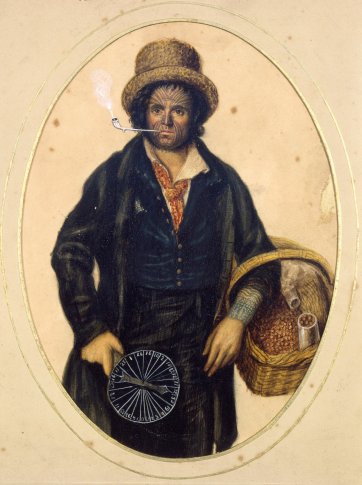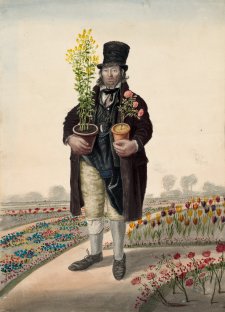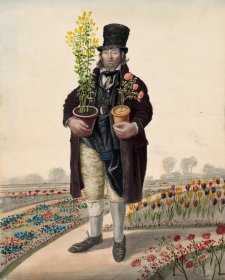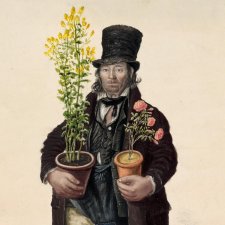Many of the poor of Dempsey’s time whose faces and biographies have been recorded were distinguished by a singular feature or accomplishment: great age, peculiar dress, remarkable fertility, display of a peculiar deformity, demonstration of a particular skill and so on.
Dempsey’s inscription on this portrait describes John Wardle as a ‘Man of great memory’, and the initial assumption of the present writer was that he was some kind of idiot savant, like the well-known George Watson, the so-called ‘Sussex Calculator’. Watson, a kind of late Georgian Rain man, was celebrated for being ‘almost an idiot’ and ‘ignorant in the extreme, and uneducated’, yet possessed of a remarkable arithmetical ability. He also had ‘the power … of recollecting the events of every day, from an early period of his life. Upon being asked, what day of the week a given day of the month occurred? he immediately (named) it and also (mentioned) where he was, and what was the state of the weather’.
Certainly Wardle’s vacant expression initially suggests a degree of retardation or autism that might make his achievement comparable to Watson’s. In fact, it transpires that the strange look is the blank stare of a blind man and that the ‘Man of great memory’ tag is in recognition of Wardle’s ability to cope with his disability.
John Crawford Wardle was born in Sunderland in 1791, the son of Jacob and Margaret Wardell [sic]. Although not born blind, Wardle lost his sight at an early age as the result of an attack of smallpox. Given the early onset of his disability and his limited geographical and social horizons, it is not surprising that he grew to be well able to negotiate his environment. His obituary notes that ‘long practice had made him very expert at finding his way about the town without any assistance other than that of his stick.’ Wardle’s knobbed cane features prominently in Dempsey’s portrait, emerging from his left hand like some prodigious extra digit.
Known locally as ‘Blind John’, Wardle survived on the support of the parish and the church and ‘a good many friends’ who regularly provided him with meals. He was also noted as ‘a constant attendant at weddings, christenings, and funerals’. Perhaps his presence at hatches, matches and dispatches signified luck, or communal empathy; perhaps there was an intuition of some kind of paradoxical magic in having a blind witness. In any event, it is recorded that ‘on these occasions he frequently received small donations’.
The church was evidently of some importance in Wardle’s life. He attended service regularly and, at one time, was the organ-blower at Bishopwearmouth Church. Dempsey seems to acknowledge the ecclesiastical centring of Wardle’s life: in the background of the portrait is a faint pencil drawing of what appears to be the parish church of St Peter’s. In fact, it was just after divine service one day that Blind John died. On 7 December 1862, as he was having his Sunday dinner, ‘he suddenly fell back and expired before professional assistance could be procured’.
Collection: Tasmanian Museum and Art Gallery, presented by C. Docker, 1956
